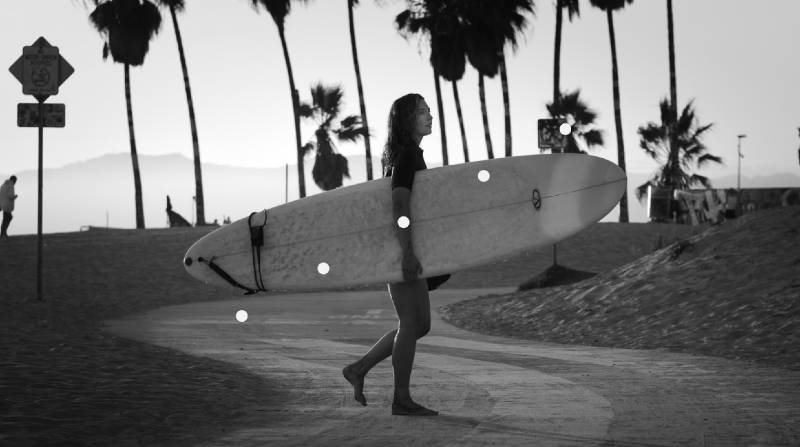Future Design Inquiries. September 2025
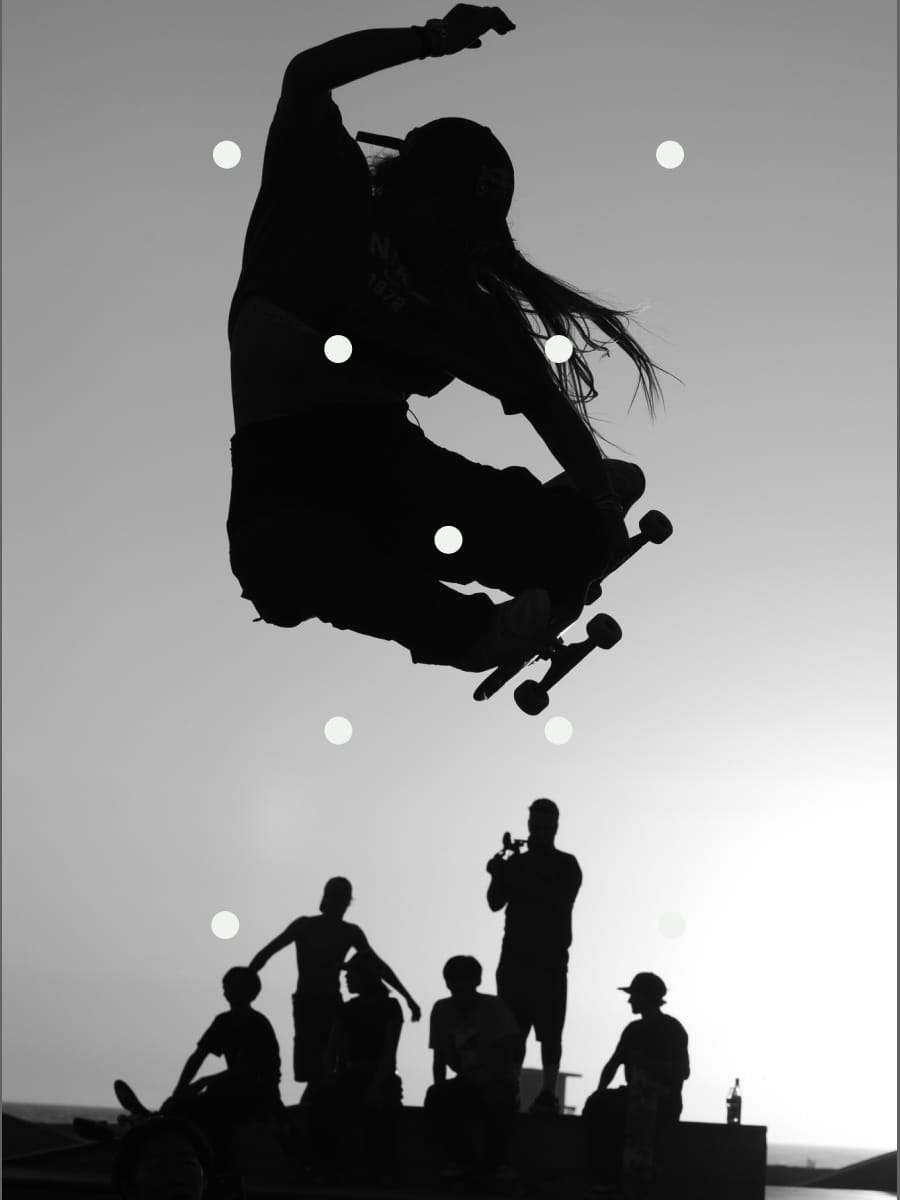
Hello from ENSO, a future design company. We’re sharing the things that make us think, bring us joy or shift our perspective.
What we’re reflecting on
Productive Friction
My first class in college was a 9-person seminar on the Soviet filmmaker Dziga Vertov (it came with a free trip to St. Petersburg, which was my true motivation for signing up). Within the first two weeks, we watched one movie, wrote a paper about it, and spent the rest of the semester critiquing each other’s work and revising our own. Over and over again. Frankly, it was brutal – each of us were assigned one class where we’d sit in the hot seat and hear everyone’s thoughts…for 90 minutes straight. And yet, as you might guess, in the end, both my work and I were much better for it. In the modern era, we’ve been sold the idea that less friction equals a better life. AI has supercharged this pitch – now we can achieve levels of efficiency and optimization never before seen! And yet there is so much lost in the process because so much of the process is lost. The struggle, the feedback, the revisions, the banging-your-head-against-the-wall sessions, the hours of wandering (mentally, physically or both). So much of that is valuable. But it’s not about rejecting efficiency altogether, it’s about knowing the difference between the good types of friction and the bad. GPS took away massive amounts of friction for me that I never need back. So how do you identify productive friction? William Van Lancker has three main principles that I think are a good start:
- Immediate feedback: You understand when you've failed and can see why.
- Cumulative learning: Each attempt builds your reference library.
- Transferable principles: The specific teaches the general. (HS)
Bravery beyond fear
We’ve written before that optimism, or pessimism, in business can be self-fulfilling. Naturally, you would expect it’s easier to be hopeful in good economic times, and fearful in bad times. But something weird is happening: record corporate profits, and rampant corporate fear. Meta AI engineer Tijmen Blankevoort posted a farewell message saying, “We are in a culture of fear”, blaming repeated layoffs and incessant performance reviews. “It’s not just dysfunction, it’s a metastatic cancer that is affecting the entire organization.” This is the same company that posted $62Bn of profits last year, and is currently worth close to $2Trn. Great economic times for Meta, terrible times culturally. This weird juxtaposition is not confined to Meta — we’re hearing variations of the same in many big companies. When Google studied its highest performing teams, it found that the #1 driver of performance was ‘psychological safety’ — the opposite of fear. Fear hinders information flow, risk taking, creativity, and generally makes everyone miserable. The causes of fear today are obvious — uncertainty around regulation, tariffs, AI, a constant ‘state of emergency’ — but some remarkable companies have flourished with bravery through the toughest times; Google’s early years were marked by one financial crisis after another, yet it built a truly magnetic brand and business through that era. In a study of 4,700 public companies through three recessions, just 9% flourished: they didn’t just cut costs, but simultaneously invested in the future. Fear is a choice and practice, and it’s not the place from which to create new value, build lasting companies, or design a future worth living in. Fostering bravery is also a choice, and a practice. It’s the order of the day. (SB)
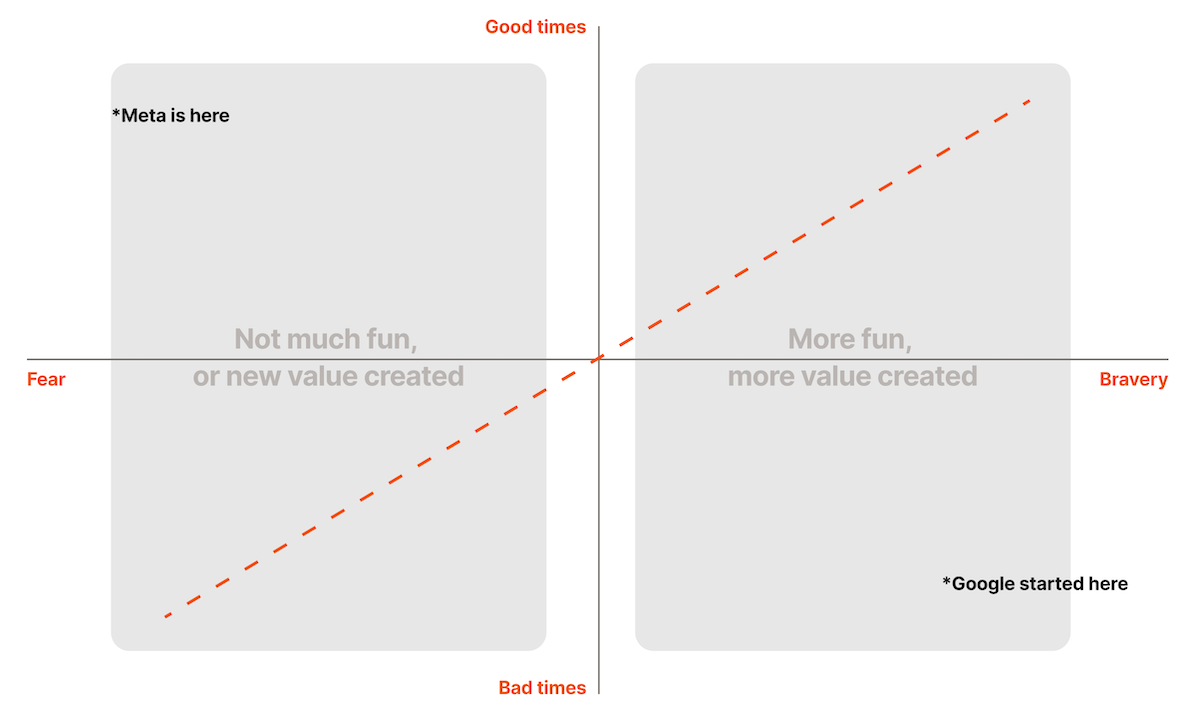
Proof of life
Once upon a time, fine dining meant fine bone china. Exquisite plates to stage exquisite food. But then, about 20 years ago, everything flipped: fine dining embraced imperfect $80 wabi sabi plates from Heath, while cheap restaurants stuck with perfect $2 plates. With that choice, restaurants were proving their attention to craft, to hand-made, to local production, and unique experience: the perfect complement to farm to table cooking. Today, culture seems stuck in its $2 plate era: oozing with generic copy and bland imagery from 'regurgitation machines'. In response, many photographers are moving back to film and vintage lenses, tired of megapixel mundanity. We suspect that the AI era will raise the bar for brands to prove they are animated by humans that give a damn: a wabi sabi brand era. Creativity, craft, curation, care, soul — with wonderful human imperfections. We’re excited for that. (SB)
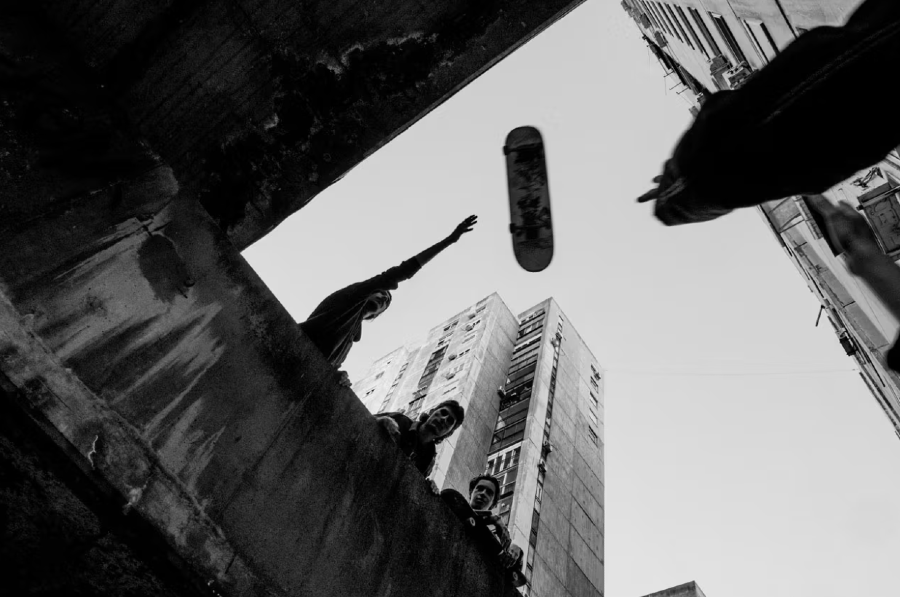
The scale of solving
Last week I spoke with someone who shared a compelling critique of design: that it’s too centered on ‘input-output’ solutions: change one thing to get the result you need. Instead of linear thinking, he said, we need systems thinking: many small interventions, emergence over control, adaptation over rigid planning. I also read Look Again by David Bailey, the photographer best known for his photography that reflected, and helped shape, the 1960s. Amongst stories of myriad models, musicians, actors and editors, he shared his distaste for working with ad agencies, who he saw as too obsessed with (their) ideas, and not attuned enough to the zeitgeist (‘feeling the wind’). Both critiques seem valid — nobody likes being sold to or being pitched a simplistic silver bullet — but also more about the scale of solution than the process. Ad agency ideas can be small-minded (e.g. pitching products) or grand (e.g. propelling a broader zeitgeist or mission). Design solutions can by myopic (simple updates) or far-sighted (e.g. giving form to the aspirations of a generation). At a time when ~2/3 of the world’s population are dissatisfied with the status quo, small advertising ideas or simplistic design solutions feel woefully inadequate. The shift in the 1960s that Bailey tapped into was a fundamental rejection of the pre-war cultural codes, and a ‘youthquake’ of new freedom. There’s clearly a fundamental rejection of established codes today, so once again, companies face a choice of ignoring that or being part of a generational reinvention. Small-minded ideas and solutions risk feeling tone-deaf, when people are yearning for something much better. (SB)
These nuggets are curated by ENSO partners Hanna Siegel (HS) and Sebastian Buck (SB).
8 things that made us think, gasp, share and laugh:
- Rotten Tomatoes isn’t so trustworthy anymore (h/t ENSOnian Kev who warned us about this early)
- Next time you’re anywhere near Santa Barbara or Los Olivos, do a vineyard tour of Domaine de la Cote; pinot noir par excellence
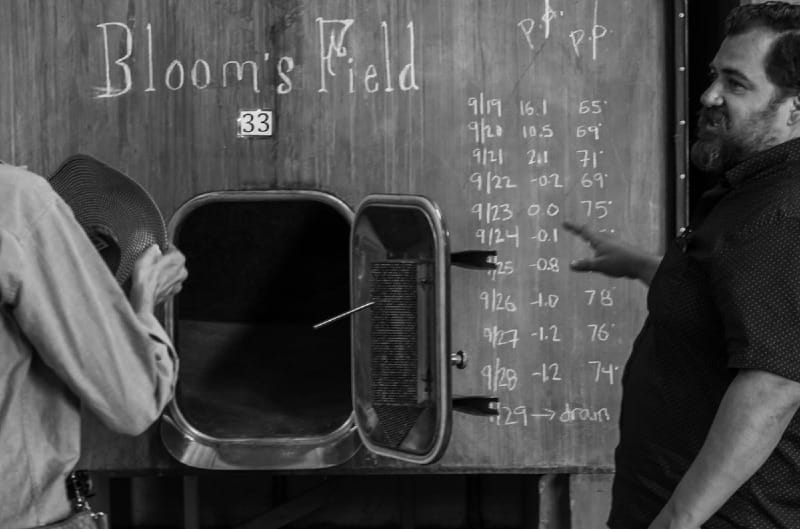
- Intergenerational Summer Camp has volunteer grandmas as counselors and honestly, it sounds like what we all need
- The difference between creative burnout and creative dormancy
- Frission is defined as “that moment when a piece of music pierces your body and soul.” Not every song evokes it, and of course it can be subjective. But neuroscientists curated this 715-song playlist scientifically proven to give you the chills.
- The FT has a fun new game, Can you run a Premier League football club?
- “Consciousness, I’ve come to believe, is not a function of neurons alone. It is also a function of care. Of love. Of the willingness to stand at the edge of death and choose, if given the chance, to return with open eyes. That, to me, is the miracle.” - Eric Markowitz’s gorgeous essay on discovering his own consciousness
- Watch the talks from Sun Valley Writers Conference — a veritable feast of creativity and wisdom. And next year, get a ticket (in January — they sell out in a few minutes), and you too could be keeping the bar open at midnight with Ruth Reichl.
What we’re working on
ENSO is a small, senior team so that we can work on just a few initiatives at a time. This allows us to go deep on some of the biggest challenges/ opportunities. Recently, we’ve been working on a few main missions with our partners:
- We have to redesign everything. We get to redesign everything. At this inflection moment of old systems breaking, widespread dissatisfaction and the AI explosion, we are thinking about how to redesign our world for abundance.
- Changing the world of work: the labor market is the engine of prosperity, but ~80% of people are not engaged or thriving. We’re working to change the system.
- Defining how the world’s most dynamic ecosystem can be harnessed to fight climate change: Finding a way to turn the incredible research, education and innovation into a new future for the planet, and for us.
Want regular inquiries? Subscribe here to get our thoughts in your inbox every so often.
Reach us at news@enso.co
See you next time.
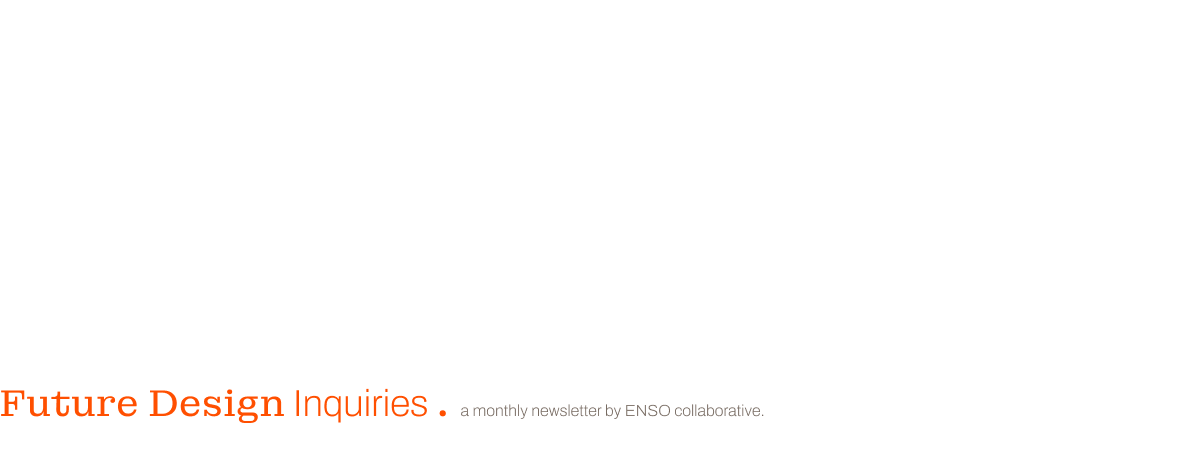
ENSO • 115 W California Blvd #9101 Pasadena, CA 91105
